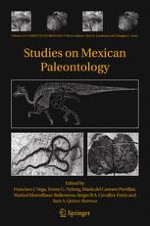During the last few years, the number of contributions to the Paleontology of Mexico has increased considerably. Paleontological work in Mexico has been focused on providing important information for petroleum exploration and specific studies dealing with pollen, foraminifera, radiolaria, dinoflagellates, rudists, and ammonites. Often these reports were published only in local or regional journals and therefore not available to the scientific community at large. The purpose of this book is to offer an updated review of the fossil groups from Mexico, providing their significance to the stratigraphy, tectonics, sedimentology, evolution and paleontology of Mexico whose study has proved to be relevant in stratigraphy, tectonics, sedimentology, and evolution. The fossil record of Mexico ranges from Precambrian to Pleistocene. Almost every Mexican State has reported fossil localities with ongoing studies and potential for the discovery of new localities. Even those localities that have been studied since the eighteen-century, such as the early Cretaceous San Juan Raya, have recently reported new fossil groups. Unfortunately, much of the fossil reports from Mexico have been published in Spanish from local journals, which represent a language barrier to the international community. There is little doubt that the paleontological history of Mexico deserves to be known in other countries. By making this book available to the international scientific community we hope that interest in the fossil record of Mexico will grow.
